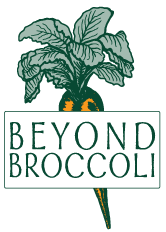I used to love Halloween as a kid. My brother and I started thinking about what we wanted to be months ahead and often spent days getting our costumes together. I don’t remember how old we were when we first got to roam the neighborhoods without an adult, but it was the 70s so likely we were barely “tweens” – and had to bring little sis along many of those years just to make sure we didn’t get lured into throwing eggs or smashing pumpkins. The more we were willing to walk the more candy we came home with, and that was the point.
Halloween was full of rituals. After Trick-or-Treating we’d dump our pillow cases of goodies on the living room carpet and count everything before dividing it into piles of things to toss, like apples (apparently vehicles for razor blades), candy to trade with bro or pawn off on little sis or parents, and the good stuff we’d eat way too much of that first night, then parse out over the next week or so with our school lunch, after school snack (with a glass of milk for “balance”) and evening dessert.
Now it appears Halloween is reduced to some kind of conspiracy to make us into “sugar addicts.” Adults lament the opportunities all of this candy laying around presents for compulsive overeating and outright binges. Parents already overwhelmed with dire warnings about childhood obesity and the addictive nature of sugar, feel pressure to create complicated rule structures around eating the Halloween loot. Many opt not to let their kids Trick-or-Treat at all preferring parties in a controlled environment. We forget that Halloween isn’t just about sugar for kids. I bet it isn’t just about sugar for adults who enjoy this holiday either.
“I like nonsense, it wakes up the brain cells. Fantasy is a necessary ingredient in living, it’s a way of looking at life through the wrong end of a telescope. Which is what I do, and that enables you to laugh at life’s realities.” – Dr. Seuss
Halloween is the ultimate holiday to let our silly – or scary sides play. If we can let go of our fears about sugar addiction – for us or our children, and embrace Halloween as an opportunity to model a healthy relationship with food, we may find that it really isn’t all that scary.
If you must impose rules related to eating candy, here are a few that support a positive relationship with food:
- Enjoy candy without distractions – not in front of the T.V. or computer, video games, or while texting.
- Encourage your kids (and yourself!) to really taste the candy. If it doesn’t actually taste as good as you think it is going to, or you don’t really like it, you can throw it out! Food we eat that we don’t need or want is wasted food – just like food we throw away, only in this case we “waste it” in our bodies instead of the garbage can.
- Eat candy after a meal or as part of a snack rather than as a replacement for either one of these. Pairing candy with whole foods is a way to give your body the nutrients it needs to work well, including dietary fiber that can help regulate the effect sugar has on blood sugar levels.

In our amped up, stressed out daily lives a little silliness can go a long way. Go ahead, dress up, get out there and have some fun, eat some treats, and don’t be tricked into believing absolute control over every aspect of life, including food, will bring you peace – even if this were possible it would be boring!


